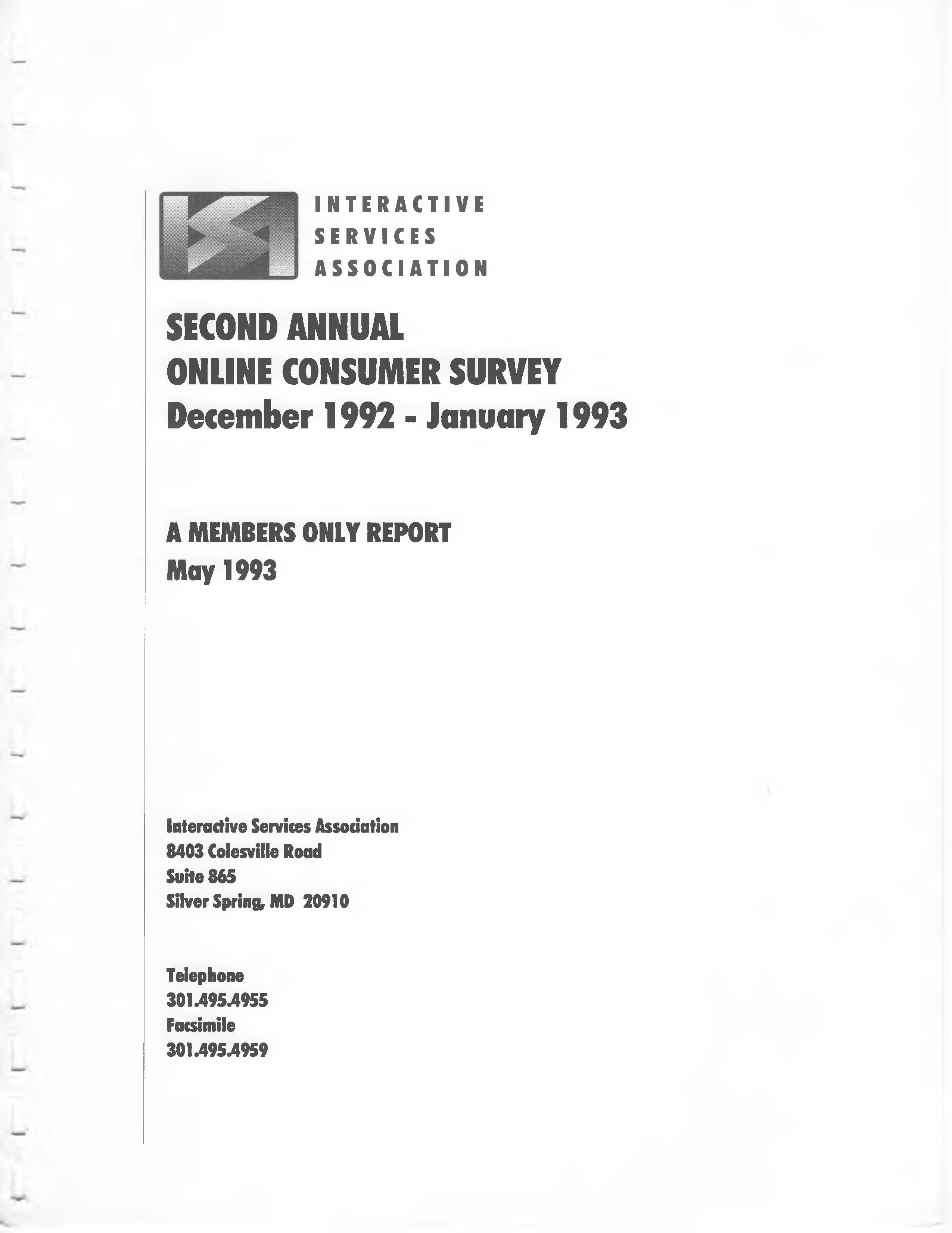Online Consumer Survey, 1992-1993
The Interactive Services Association, a trade organization for companies that marketed online services [think AOL or CompuServe] to consumers, issued several reports about consumer behavior online. The 1993 report was done just before the wide-spread use of the World Wide Web. Here are some of the highlights from the report:
- Active users find that no one system meets their needs completely, and seek out unique content and bargain features. Three in five online survey respondents use at least two online systems, and more than half subscribe to three or more. This should strongly encourage innovations by incumbents and unique offerings by new entrants – right-minded efforts will be recognized and rewarded by a market that restlessly seeks out new and improved services. (More representative survey data suggest that only about one-fourth of all online users use more than one system.)
- BBS’s appeal to online users on both price and content. About two-thirds of respondents use bulletin board systems (BBS’s) in addition to commercial online services. A third or more cite cost, software libraries for downloading, and communication with other users as the reasons for BBS’s appeal. Commercial services must continue to expand their offerings beyond these latter areas in order to justify their higher fees.
- Software downloading, communicating with others who share interests, and getting PC-related help and information lead in popularity among applications. Respondents were asked to choose, from a listing of 10, the three applications they use most. In addition to the three just mentioned, exchanging electronic mail with friends and family, and obtaining current, general news round out the first tier of most-used applications. Systems and services competing for the core of today’s market must continue to advance their offerings in these areas.
- Online use by multiple household members is substantial and growing. Regular use by other family members was reported by a full 42.5% of respondents, almost double last year’s percentage. In addition, a remarkable one in ten of all respondents report regular use by a child or children 12 or under. Although Prodigy did not participate in the survey, its use by multiple-system users may underlay this phenomenon – along with the growth of family-oriented features on other systems. This paradigmatic change, regardless of its source, presents a new opportunity to be addressed broadly by the industry.
In a couple of years, there would a report on how to build online services that were Web-based.

 HF-Second-Annual-Online-Consumer-Survey-120192
!!!!!!!!!!!
HF-Second-Annual-Online-Consumer-Survey-120192
!!!!!!!!!!!Related Items
No related items.